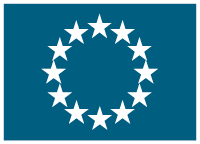Forest fires and nature II â second part of raising rural residents awareness of the forest fire prevention issue
(FORESTFIRE II)
Date du début: 1 oct. 2010,
Date de fin: 31 mars 2013
PROJET
TERMINÉ
Background
Poland has around 9 million ha of forest cover (28.9% of its surface area). Just over 82% of the forests are publicly owned of which 78% is managed by the governmental organisation State Forests National Forest Holding. Polandâs forests are thought to be the forests in Central Europe which are most threatened by forest fires. This may be due to the high proportion of coniferous forest habitats which account for nearly 60% of the State Forest managed forest areas and the dominance of the Scots pine (around 70%) may also be part of the issue. The age of the stands is also of significance: stands that are younger than 40 years of age burn more easily and these younger stands currently make up around 29% of State Forests managed area. In 2007 there were 2 818 fires in the area managed by State Forests and 550 ha were burned. Around 46% of these fires were the result of arson and 24% were caused accidents.
Objectives
The project FORESTFIRE II carried out the second of three information campaigns, which are planned across Poland by the beneficiary. This second offensive was carried out in the south eastern part of Poland where forest fires are most often caused by people. The project carried out activities to raise the awareness of forest fire prevention among rural residents and people using forests for recreational purposes in order to reduce the risks of accidental forest fires.
Specific goals were to:
Raise the awareness of biodiversity loss caused by forest fires;
Change peopleâs attitudes, behaviour and habits towards the issue of forest fires and persuade them to support forest fire prevention measures;
Increase knowledge of the most common causes and reasons for forest fires.
Results
The project helped to increase the knowledge and awareness of the general public concerning the threats linked to forest fire and of ways to prevent such fires by between 21 % and 92%. 30% of the respondents from the districts where the project was implemented (MaÅopolskie, ÅwiÄtokrzyskie, ÅlÄ
skie, Podkarpackie, Lubelskie and Åódzkie) were informed about the project and its objectives. This increase in knowledge helped to decrease the number of forest fires that were purposefully started by humans by 31% (1% more than what was expected) in the districts where the forest was implemented. The number dropped from an average of 661 cases per year between 2005 and 2009 to 453 cases in 2012.
The following activities were also carried out:
Five short radio spots were broadcast in six districts 4 800 times in total;
Five short TV spots addressing different target groups were broadcast by regional TV stations in six districts 1 500 times;
Five sponsored articles were published on threats related to forest fires and to fire prevention rules in two regional daily papers the regions covered by the project;
Three full-page advertisements were published on threats related to forest fires and to fire prevention rules in two regional daily papers in the regions covered by the project;
The film âDangerous fireâ was seen 960 times on YouTube and 3 109 times in Internet TV. âLetâs enjoy the forest safelyâ was seen 620 times on YouTube and 2 588 times on Internet TV;
Educational and documentary films were broadcast on two well know Polish satellite TV channels nine times;
Training materials were produced for teachers, members of Voluntary Fire Brigades and priests;
Eight training workshops were organised for 400 primary and secondary school teachers and for 240 members of Voluntary Fire Brigades;
A wide variety of promotional material was produced and distributed amongst local communities and to students of primary and secondary schools.In order to maintain the further decrease in the number of forest fires and continue raising awareness in this field, the project beneficiary recommends that the campaigning actions should be continued.
Further information on the project can be found in the project's layman report and After-LIFE Communication Plan (see "Read more" section).




